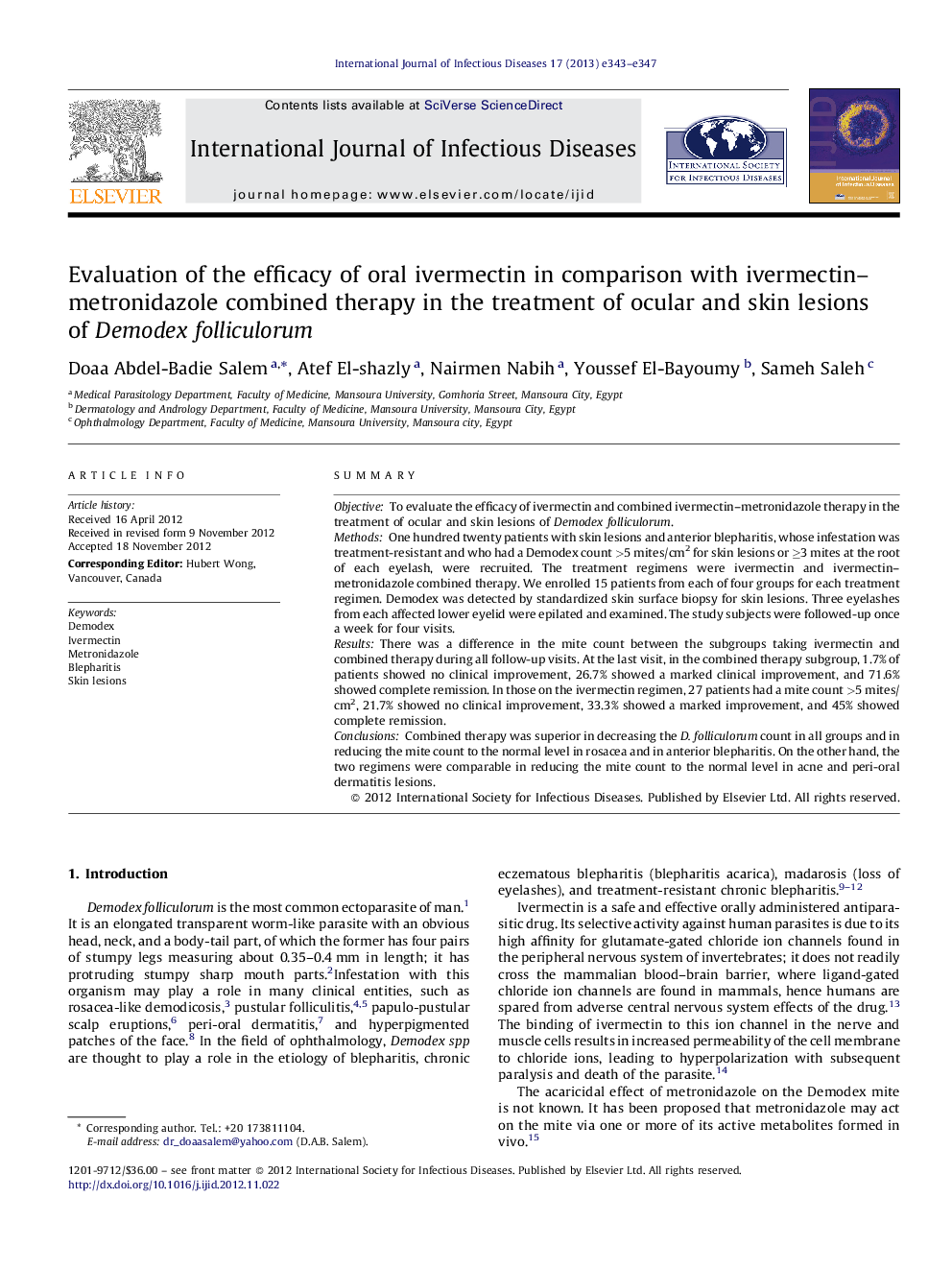| Article ID | Journal | Published Year | Pages | File Type |
|---|---|---|---|---|
| 3362888 | International Journal of Infectious Diseases | 2013 | 5 Pages |
SummaryObjectiveTo evaluate the efficacy of ivermectin and combined ivermectin–metronidazole therapy in the treatment of ocular and skin lesions of Demodex folliculorum.MethodsOne hundred twenty patients with skin lesions and anterior blepharitis, whose infestation was treatment-resistant and who had a Demodex count >5 mites/cm2 for skin lesions or ≥3 mites at the root of each eyelash, were recruited. The treatment regimens were ivermectin and ivermectin–metronidazole combined therapy. We enrolled 15 patients from each of four groups for each treatment regimen. Demodex was detected by standardized skin surface biopsy for skin lesions. Three eyelashes from each affected lower eyelid were epilated and examined. The study subjects were followed-up once a week for four visits.ResultsThere was a difference in the mite count between the subgroups taking ivermectin and combined therapy during all follow-up visits. At the last visit, in the combined therapy subgroup, 1.7% of patients showed no clinical improvement, 26.7% showed a marked clinical improvement, and 71.6% showed complete remission. In those on the ivermectin regimen, 27 patients had a mite count >5 mites/cm2, 21.7% showed no clinical improvement, 33.3% showed a marked improvement, and 45% showed complete remission.ConclusionsCombined therapy was superior in decreasing the D. folliculorum count in all groups and in reducing the mite count to the normal level in rosacea and in anterior blepharitis. On the other hand, the two regimens were comparable in reducing the mite count to the normal level in acne and peri-oral dermatitis lesions.
